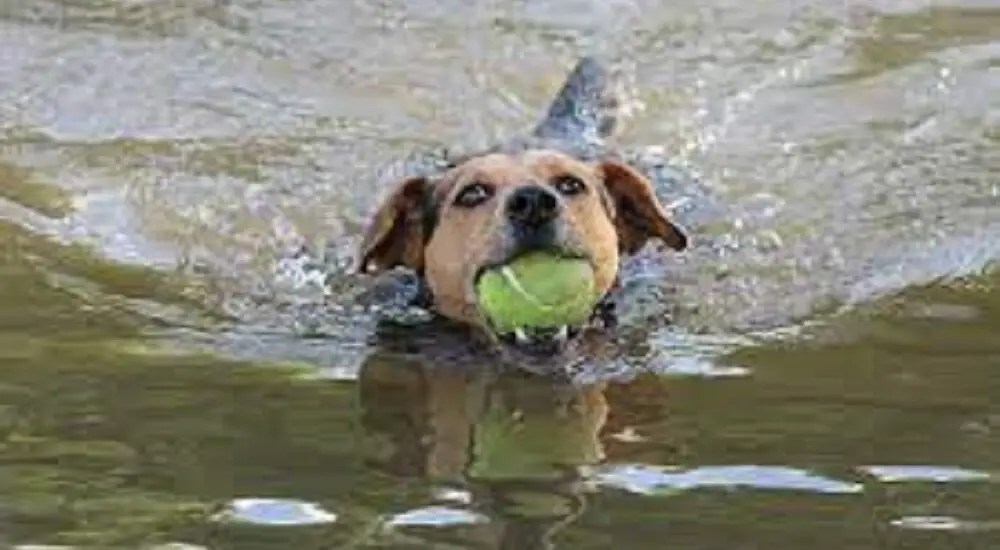If you want to find out how to get your dog to bring the ball back during fetch, you’re in the right place. Fetch can be a delightful game for both you and your dog, but it can quickly turn frustrating if your dog won’t bring the ball back. In this comprehensive guide, we’ll provide detailed steps to help train your dog to become a fetching pro.

Photo from PickPik
Table of Contents
Understanding the Basics of Fetch
Before diving into the training techniques on how to get your dog to bring the ball back, understanding the core components of the game of fetch is essential. Fetch primarily consists of three steps: the chase, the catch, and the return.
Many dogs have an instinctual love for the first two parts—chasing and catching. However, the ‘return’ component is often where the breakdown occurs.
It’s crucial to realize that not bringing the ball back doesn’t necessarily mean your dog is disobedient. It could be due to a variety of reasons, including lack of training or even distractions in the environment.
Scientifically speaking, the action of fetching and retrieving has roots in the predatory instincts of canines, which involve chasing, capturing, and returning food to a safe place. By understanding this, you can align your training techniques with your dog’s natural instincts.
Source: American Kennel Club
Initial Training Steps
The initial training on how to get your dog to bring the ball back involves setting up a controlled environment and starting with the basics. Here are the steps:
- Basic Commands: Your dog should be familiar with basic commands such as ‘sit,’ ‘stay,’ and ‘come.’ If not, invest some time in teaching these commands as they will serve as building blocks for future training.
- Choose the Right Ball: Select a ball that your dog can easily hold in its mouth. The size and material matter, so observe your dog’s preferences. Some dogs prefer rubber balls, while others may like fabric-based toys.
- Start Indoors: Begin the training indoors or in a fenced yard where there are fewer distractions. This will allow your dog to focus more on the game.
- Engage and Toss: Hold the ball to get your dog’s attention and then toss it a short distance. Do not throw it too far initially.
- Reward and Repeat: As soon as your dog brings the ball back, reward it with treats and affection. Consistency and repetition are key.
For more articles like this one click here – How to Get Your Dog To Do What You Want: Your Ultimate Guide to Dog Training and Care
Advanced Training Tips
Once your dog masters the basic fetch, you might still encounter some hitches when trying to get your dog to bring the ball back. To address this, advanced training techniques can be implemented:
- Use a Second Ball: One effective strategy is to use a second ball to entice your dog to return the first one. As your dog returns with the first, show the second and throw it only when the first is dropped at your feet.
- Teach the ‘Drop It’ Command: If your dog brings the ball back but doesn’t let go, the ‘drop it’ command can be useful. To do this, hold a treat close to your dog’s nose and say ‘drop it.’ The dog will likely drop the ball to get the treat. Practice this until your dog associates the command with the action.
- Extend the Distance: Gradually extend the distance you throw the ball, challenging your dog more as it gets comfortable with shorter distances.
- Add Distractions: Add minor distractions like toys or other people to train your dog to focus on bringing the ball back even in a more complex environment.
Common Mistakes to Avoid
There are some common mistakes that people make when figuring out how to get their dog to bring the ball back. Being aware of these can save you a lot of time and frustration:
- Don’t Chase the Dog: If you chase after the dog, it may think that you are playing a different game. This contradicts the idea of fetch where the dog is supposed to return the ball to you.
- Don’t Overdo the Training: Keep your training sessions short, about 5-10 minutes, especially in the beginning. Long sessions can be tiring and frustrating for both you and the dog.
- Don’t Forget to Reward: Positive reinforcement is key in any type of dog training. Always reward your dog for a job well done to encourage repetition of the behavior.
Frequently Asked Questions
Here are some commonly asked questions people have when trying to get their dog to bring the ball back:
- How long does it usually take to train a dog to bring the ball back?
The time it takes varies depending on the dog’s age, temperament, and previous training. Some may get it within a week, while others might take a couple of months. - Can older dogs be trained to fetch?
Absolutely, though it may take a bit longer for older dogs to learn new tricks, they can still be trained to fetch. - What should I do if my dog seems uninterested in the ball?
Try different types of balls or toys. Each dog has its own preference, and you may have to do some experimenting to find out what your dog likes.
Final Thoughts: How to Get Your Dog to Bring the Ball Back
In conclusion, teaching your dog how to get the ball back is an achievable goal. It requires patience, the right techniques, and a bit of insight into canine behavior.
Always remember that the purpose of the game is not just to keep your dog physically active, but also to foster a healthy relationship between you and your pet. Happy fetching!
